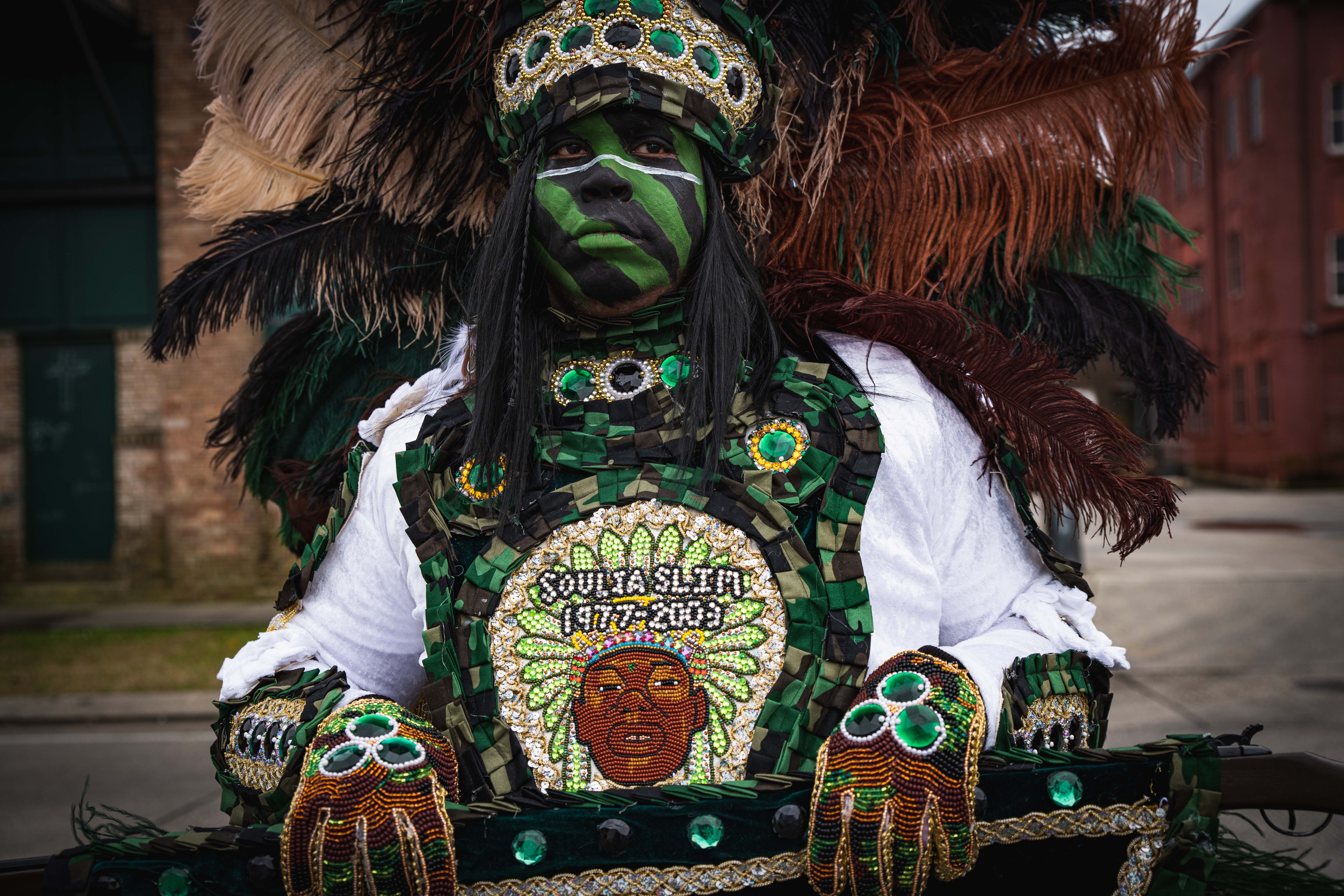Gizmo Hartley is too cold to be a Hot Boy. Or at least he was, until this Mardi Gras. Hartley, the Flag Boy for the Wild Tchoupitoulas tribe of Black Masking Indians, is a relative newcomer to the Indian tradition but has made his mark with elaborate and original suits that tell a specific story. This year’s suit, which Hartley calls “The Ancestor Suit” tells the story of New Orleans hip-hop culture while celebrating the legends who left us too soon.
“When I was little – we going way back – when I was a kid, the term Hot Boy, you always heard that,” Hartley said. “And then when I got to puberty, the Hot Boys dropped.”
The Hot Boys Hartley is referring to are the New Orleans hip-hop legends Lil Wayne, Juvenile, B.G. and Turk, who formed the group and shaped the sound of New Orleans music in the late 1990s on the Cash Money Records label. Along with No Limit Records, which featured artists such as Soldier Slim, Mia X and Mystikal, New Orleans was the epicenter of Southern hip-hop and rap, and had a style all its own, both musically and sartorially. And it was from this style that Hartley’s found inspiration for his suit.
“All their album covers they would have the camouflage bandanas — all their videos — they’d have camouflage bandanas and the white shirts and the Girbauds and the Reeboks,” Hartley said. “Soldier Slim was talking about his Reeboks and his ‘soldiers’ on his feet. So everybody had this whole kinda thing where they had camouflage. So that was the whole thought process when I was making this. If I’m gonna start paying tribute to New Orleans people, and I need a color for this year, I ain’t never seen nobody do camouflage. So I pulled out the camouflage, tried to make it look like a white T-shirt, and throw the Girbauds on there.”
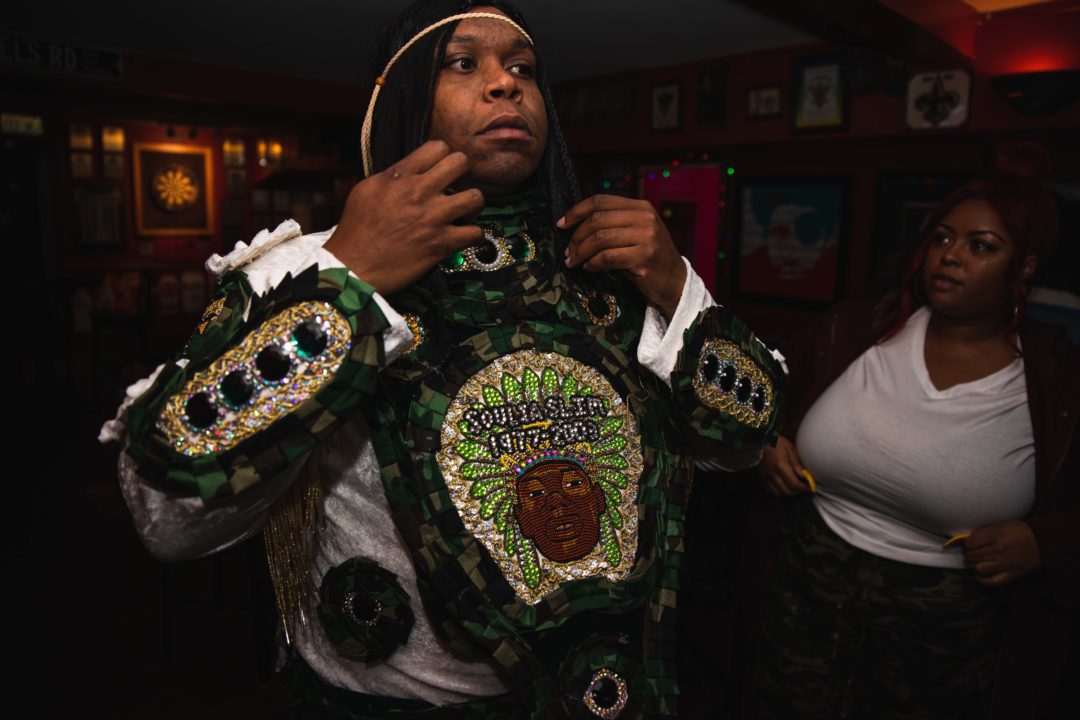
The Girbauds refers to Marithe + Francois Girbaud jeans, which were the signature jeans of hip-hop, and a were referenced slyly in Hartley’s suit.
“My one favorite feature would be the Girbaud straps,” Hartley said of his suit. “The M+F+G at the bottom of the leg. That’s the insider insider — like you really got to know about Girbauds. Everybody knows about the ‘soldiers,’ but to immediately see that and know where it comes from you have to know.”
But what really set Hartley’s current suit apart were the intricately beaded patches honoring deceased New Orleans musical luminaries such as Soldier Slim, Magnolia Shorty, Travis “Trumpet Black” Hill and 5th Ward Weebie, who passed away on Jan. 9.
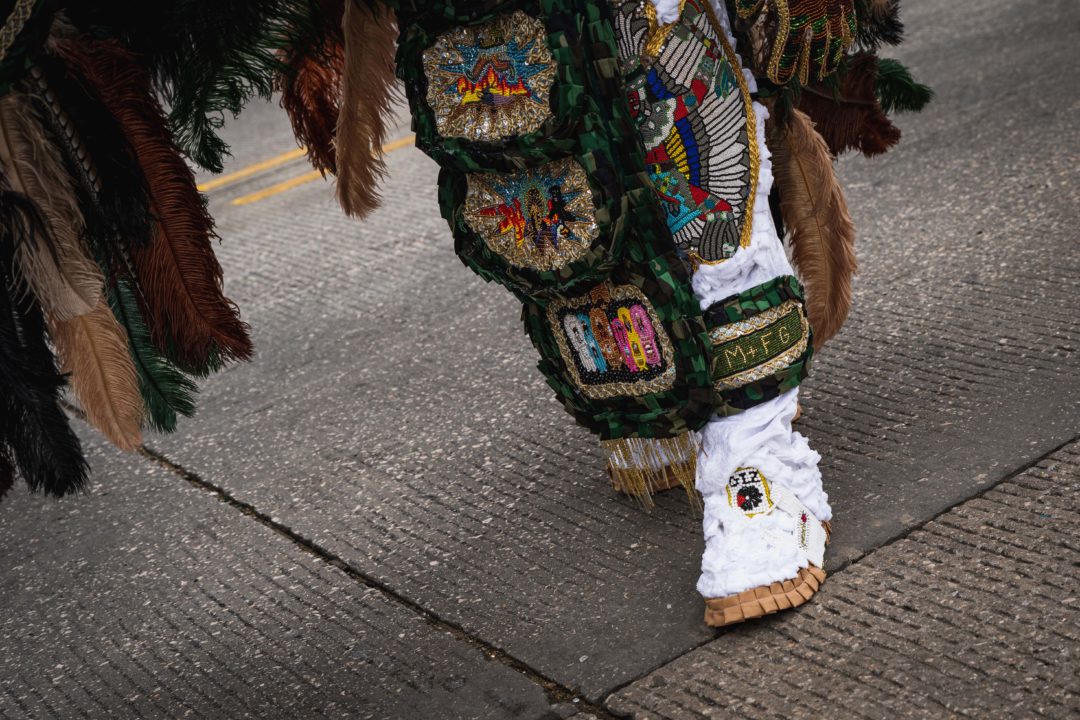
“We are all honoring our ancestors,” Hartley explained. “But I’m honoring the ancestors that we got audio and video of, that we actually knew and we second lined over. That’s the ones I’m putting on it.”
The suit was also a departure for Hartley in its design and lighter weight, which is atypical for a Flag Boy suit.
“The Flag Boy suits usually are a lot bigger because the Flag Boy is like a step up from the Spy Boy, and it’s supposed to be like a step before the chief at the same time,” Hartley explained. “The Flag Boy is supposed to be the standard because you’re holding the name of the tribe. So usually it’s a bigger suit. But at the same time I wanted a suit that would be detailed. It’s a slim apron but it is still a four-part apron.”
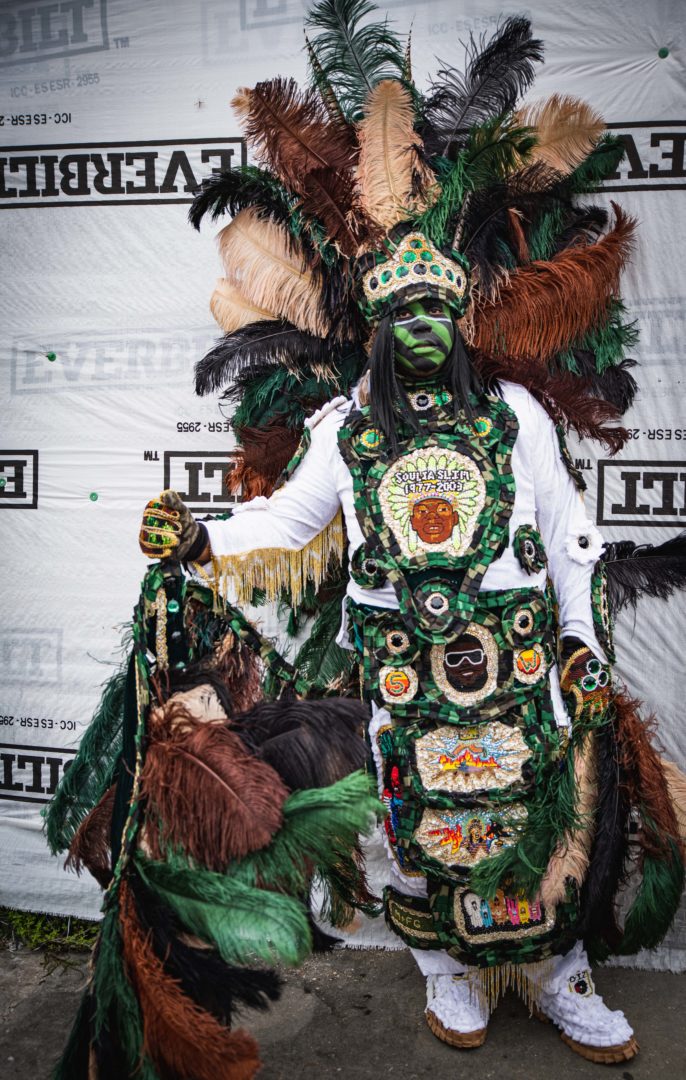
Hartley also wanted a suit that would be more portable, as Indians often do private parties and events to help pay for the construction of their suits, and large suits can be difficult to transport.
“The way I constructed it is so I can roll it up. I can roll it up and put it in a suitcase,” Hartley noted.
If Hartley’s favorite part of the suit was the Girbauds, my personal favorite were the gloves — gloves that Hartley let me bead after I expressed interest in helping sew. And make no mistake about it, after beading the gloves, I have a newfound respect for the amount of effort and genius that goes into an Indian suit. Hartley typically sews for two or more hours a day for close to a year to finish his suit. And he is fast. I can tell you from personal experience that the gloves alone took me, a novice, close to three weeks.
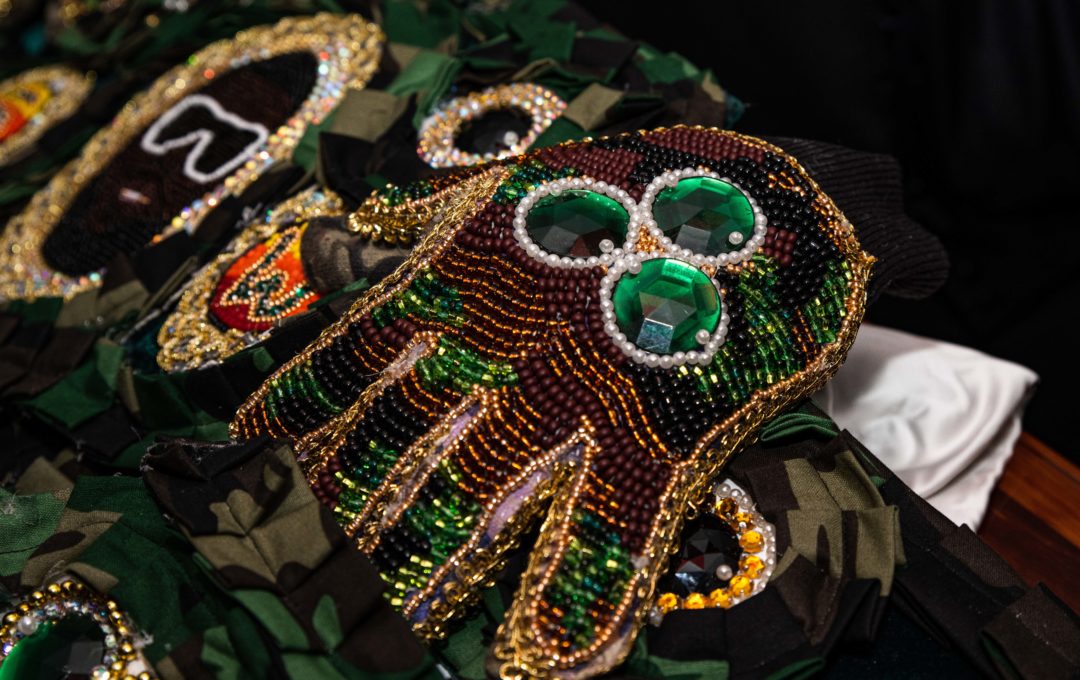
Whenever you do something different, reactions will be mixed, and Hartley’s suit was definitely a topic of conversation.
“A lot of the local rap blogs posted about it because it had a lot of rappers on it,” Hartley said. “And for the most part it was received well among the hip-hop community, because the people in my demographic, the people who I made it for, they liked it. You know. Now, I don’t know about the Indians liking it, because the Indians’ job is to hate. They’re going to hate no matter what because they want to say that they’re the best. I really can’t say how the Indians felt about it because it’s not really a traditional style, as far as the patchwork on Indian suits. But I know at the same time my style was something I wanted to do. Everybody got to have their own style. That’s why Tootie (Montana) got a statue because everyone was coming the same way and he came a different way.”
For Hartley, originality, while honoring the past, is the tightrope he walks. He is already working on a new suit, which he assured me, will be totally original, and I have no reason to doubt him.

